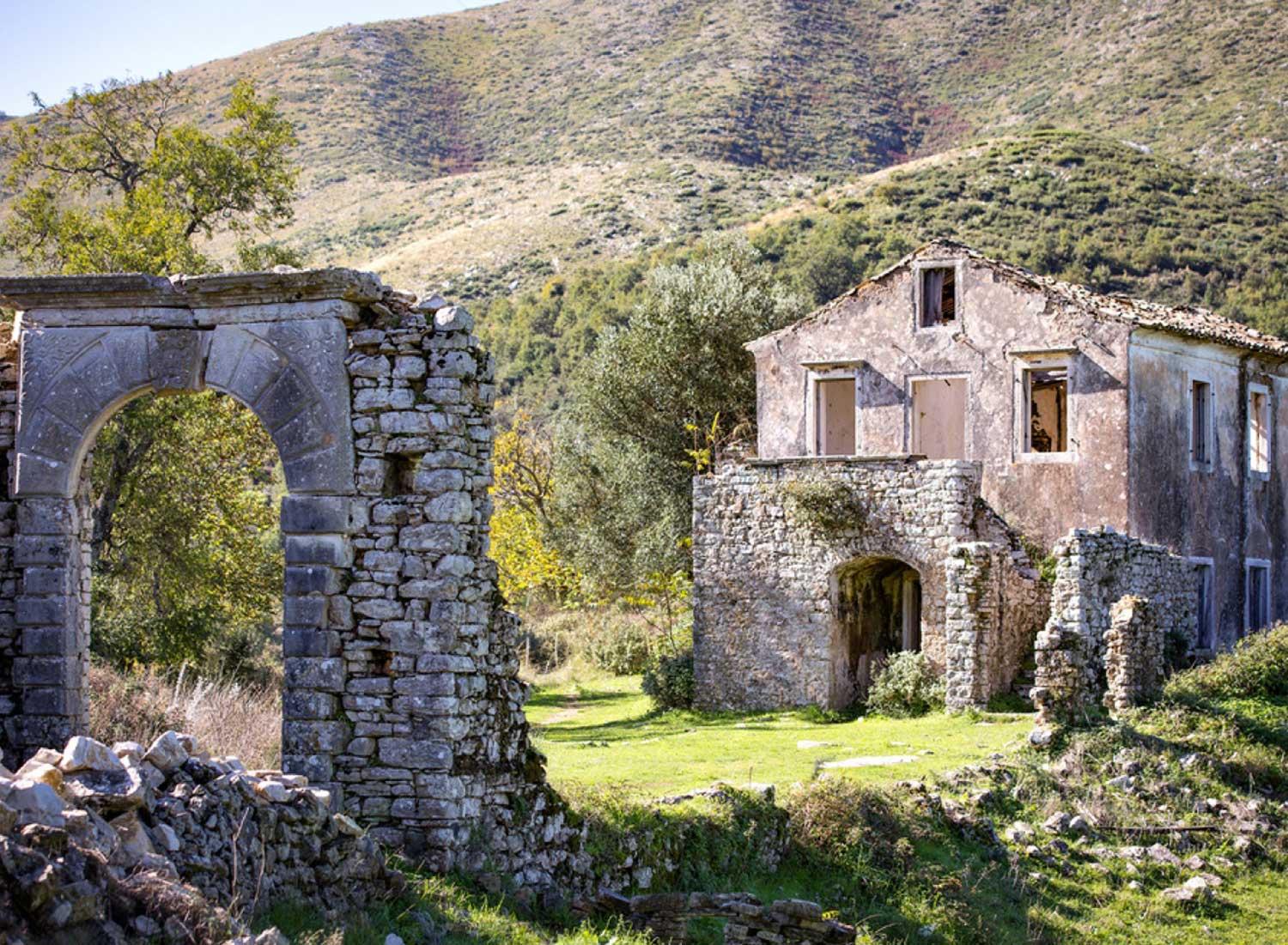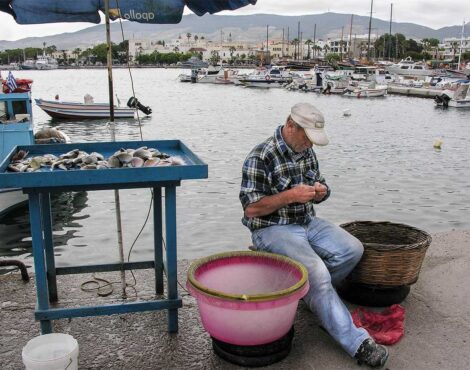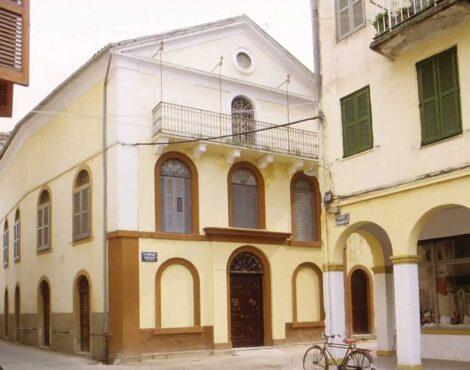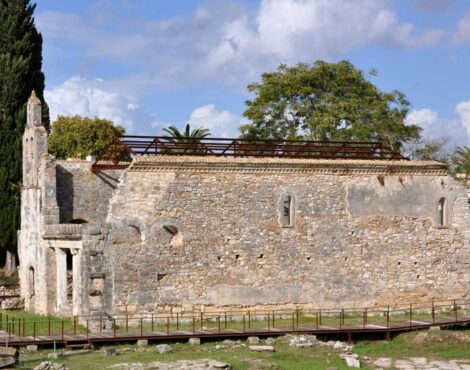The island of Corfu boasts a vast and layered history that stretches back to antiquity. Throughout the centuries, many settlements have flourished and declined, shaping the current landscape of the island. Numerous are the cases of abandoned villages in Corfu, villages whose stories and ultimate fates are known only to a few. Beyond the more well-known examples such as Old Perithia and Sinies, there are several lesser-known locations that appear to have once hosted both small and larger communities.
A little north of the village of Spartilas, and more specifically just a few meters from the Church of “Panagia ton Dromon” (Mary of the Roads), there rises a hill approximately 850 meters high, known by the name Michalakades. This particular spot is said to have once been home to a village of the same name, a village now erased not only from memory but also from the very canvas of nature itself. In the broader area, one will find only the faint ruins of house skeletons that once stood proudly on that site. This settlement seems to have been abandoned many centuries ago, as its former inhabitants chose to relocate to other nearby villages or to more accessible, lowland areas that offered a more sustainable way of life.
Another village that appears to be a ghost village is that of Platarades, most likely named after the church of Panagia Platernì, which it once hosted. Virtually unknown to most Corfiots today, this tiny village is believed to have been situated between what are now the villages of Alimatades, Vatonies, and Arkadades. Although very few ruins survive in the area, the existence of the village is historically documented as early as 1446, when the settlement is mentioned in records of the Barony of Caracciolo. The church itself is first referenced in 1513, and until the 17th century, several records point to the village’s continued existence and to its inhabitants, mainly through notarial documents. Gradually, for reasons that remain unclear, the village was deserted and its people scattered. The church, though abandoned, was not forgotten; the residents of Alimatades took responsibility for its care. In the mid-19th century, there were efforts to restore the church based on designs by the engineer Saddier. However, the cost was deemed prohibitively high, and the restoration works were never carried out. The icons from the church were moved to the Church of the Panagia in Arkadades, a fact that later inspired a number of local legends and stories.
Heading a bit westward, one encounters yet another deserted settlement. This one is none other than Vitoulades, a small cluster of homes that still stands only a few meters from the roadside. The earliest official records of the village date back to 1446, though it is believed that the area had been inhabited even before that time. The gradual abandonment of the settlement began during the 19th century. By the end of that century, the population had dwindled to just a few dozen people. The complete abandonment of the village is believed to have occurred only in recent decades. Nearby, there stands a church dedicated to Saint George, which some sources claim served as the church of the old village of Vitoulades.
These three lost villages, all situated in the northern part of Corfu, are only a few of the many that have faded from the island’s living landscape. At the same time, several other villages on the island are currently at risk of the same fate, as their remaining inhabitants increasingly choose to live elsewhere. Special mention should be made of the small, little-known hamlets scattered along the northern slopes of Mount Pantokrator. Settlements such as Lauki, Vrachleri, Fourni, and Trimodi represent small hidden gems that deserve to be protected. It is essential that efforts be made to preserve them, so they might endure the passage of time and continue to tell the quiet stories of Corfu’s rich and complex past.





